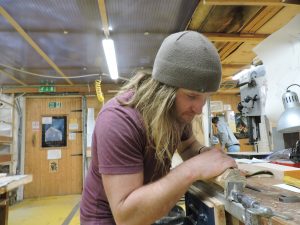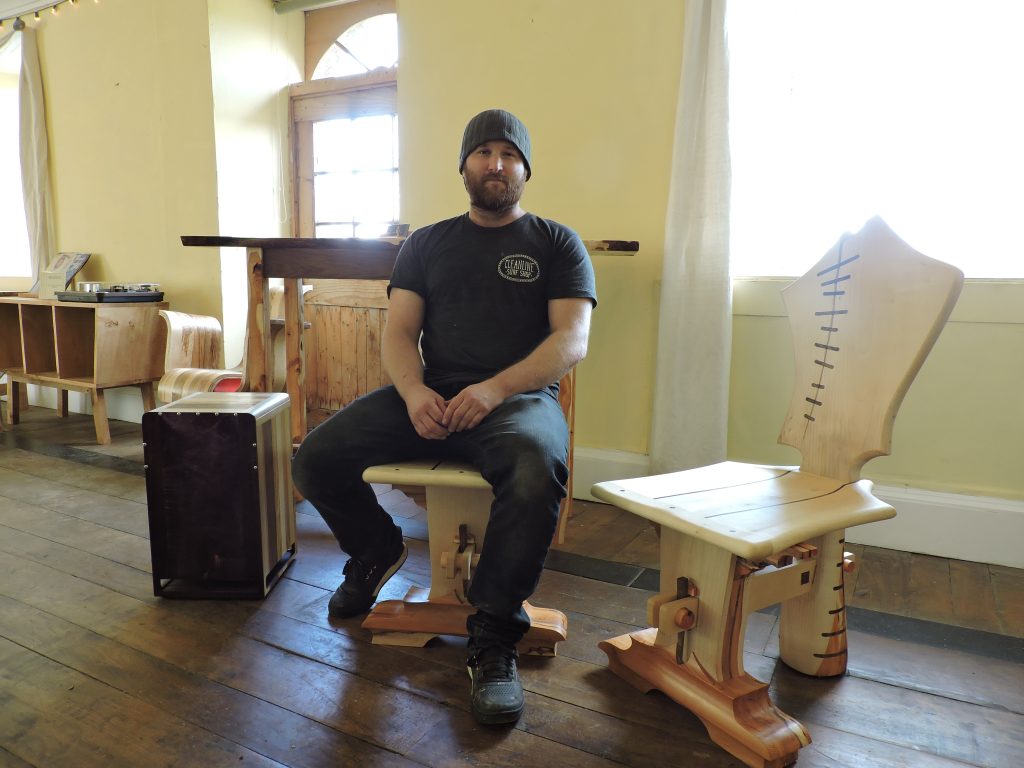Some students come to us straight from school, but many leave it a few years before enrolling at the Chippendale school.
Many feel pressured to go into higher education and then into a job that they find unfulfilling.
That’s when it becomes a choice between the conventional or following their dreams.
We believe at the Chippendale school that you’re never too old, or too young, to choose fine furniture design and making.
One far-flung student on our 2018/19 professional course was Kent Turner, from Washington State in the USA.
He had been looking to make a career change into fine furniture design and making for several years.
Seattle
But for Kent, then working as a builder on an island north of Seattle, a decision finally had to be made.
He therefore came to us knowing something about working with wood, having been building timber frame houses.
But that doesn’t mean that we only take students with prior knowledge of woodworking.
In our experience, some of our best students are those who are complete novices.
What’s important is that students come to us with a thirst for knowledge and the acquisition of skills.
Our nine-month professional course is intensive and we expect students to work hard.
That’s exactly what Kent did, and proved himself to also have very real design and making skills.
Signature
For us, his signature pieces were a pair of funky and quirky chairs.

But, take away the quirkiness and they are also very comfortable.
That balance between form and function is very important in furniture design.
Because it’s all very well designing something with a visual WOW factor, but if it doesn’t perform well it’s a design fail.
Kent called his chairs ‘Stribh and ceannsaich’ which is Scottish Gaelic for ‘struggle and overcome.’
It’s what Kent had to do, in learning his new trade and making his design ideas work.
His chairs were designed around ease of disassembly, held together by Japanese joinery, dowels and wedges.
Sculpted
The feet of Kent’s chairs were made from yew, and the seats and backs from sycamore, with walnut accents.
Those accents were sculpted into one of chairs, where one side of it appeared to be splitting away.
It was a natural fault in the wood and Kent’s solution was to ‘stitch’ the chair back together with walnut strips.
The clever design flourish was to place the walnut strips on different places on each side of the chair, giving the impression of crude sewing.
Kent wanted to put a little of Scotland into his chairs, hence the stribh and ceannsaich name.
But it’s also a reflection of the sheer hard work that went into their creation.
For example, sanding the feet alone took six-and-a-half hours of toil.
However, Kent struggled and eventually overcame.
We wish him every success in his new career.
